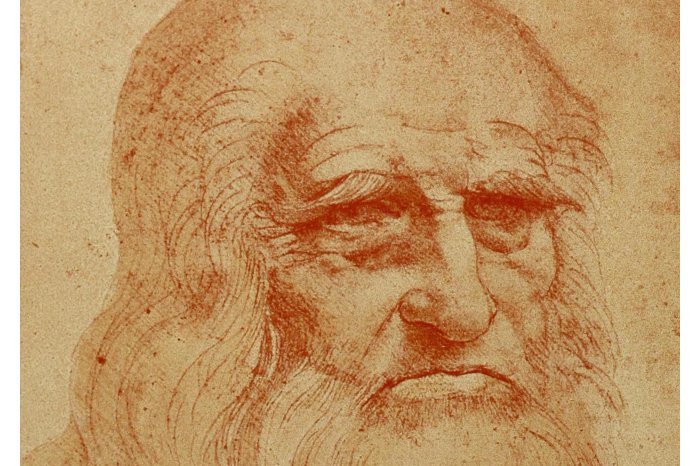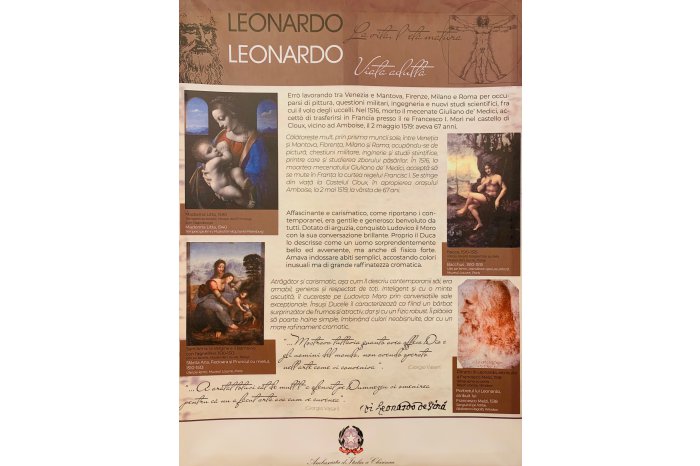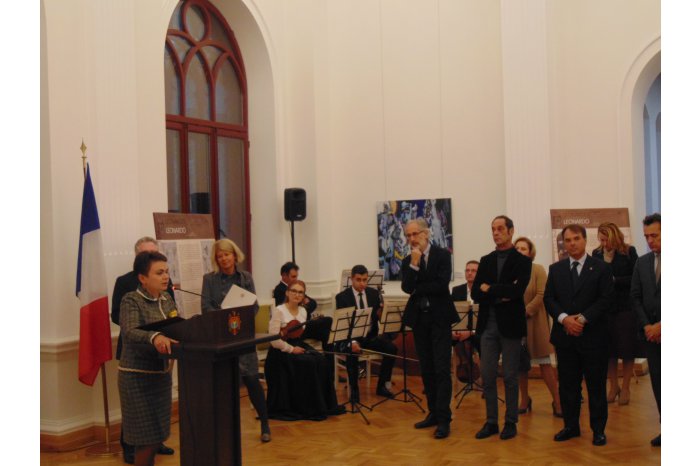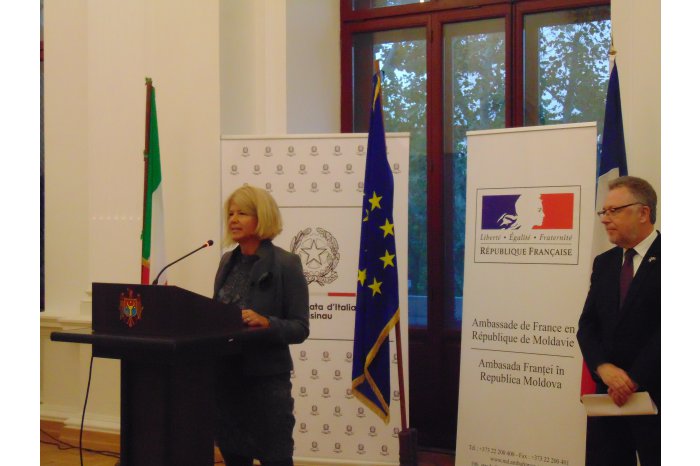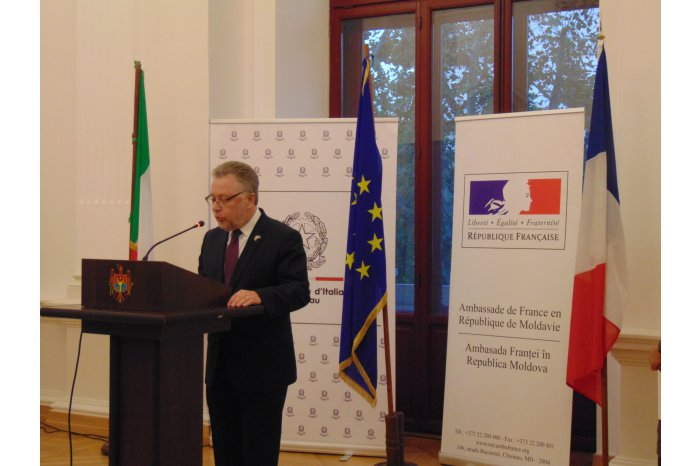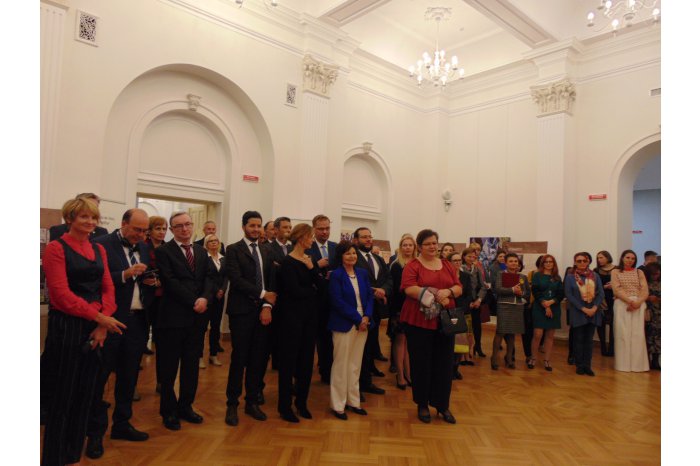Great sculptor, painter of Renaissance commemorated in Moldovan capital at 500th anniversary of death
17:42 | 09.10.2019 Category: Culture
Chisinau, 09 October /MOLDPRES/ – The Embassy of Italy and the Embassy of France in Moldova organised a conference and exhibition on the occasion of the 500th anniversary of the death of painter and sculptor Leonardo da Vinci (1452 – 1519), on Tuesday, 08 October, at the National Museum of Arts of Moldova (MNAM).
The event was attended by the Secretary of State for Culture, Victoria Nagy Vajda, the Ambassador of Italy to Moldova, Valeria Biagiotti, Ambassador of France, Pascal Le Deunff, representatives of diplomatic corps accredited to Chisinau municipality, people of culture and art.
Interviewed by agency, the Secretary of State in the field of culture, Victoria Nagy Vajda, has said that she was very happy that the Embassy of Italy and the Embassy of France has organised such an event in Chisinau municipality, as Leonardo da Vinci is commemorated throughout Europe at 500 years from passing into eternity.
"Such an exhibition, whether bigger or smaller, takes place in many cities, from the European capitals, to important cultural cities, such as those in Italy. Last year, I went to Florence, this year to Palermo and in both cities I found an exhibition dedicated to da Vinci. And in New York I saw such an exhibition. Now, this exhibition gives me enormous satisfaction, because we are also somehow on the map of the cultural world. I understand that it is a mobile exhibition and it will be taken to educational institutions too, and these informative panels with the works of Leonardo, which contains a lot of info about his work, ideas and achievements, are important study materials for children.”, said Victoria Nagy Vajda.
There have been sent greetings to assistance of ambassadors Valeria Biagiotti and Pascal Le Deunff, which evoked the personality of Leonardo da Vinci.
At her part, deputy director of MNAM, Lucia Postica, has said that on 02 May 1519, the painter, architect, musician, inventor, anatomist, cartographer and writer Leonardo da Vinci, considered the most important genius in the history of mankind.
"Leonardo di Ser Piero da Vinci, known as Leonardo da Vinci, was the most important representative of the Italian Renaissance during its peak. He was a true master of the portraiture of women. From Ginevra de Benci to Mona Lisa, his portraits of women are deep and psychologically intuitive. The fresco which is entitled: The Secret Supper, in Milan, is the most well – known religious representation of all time. The universalist spirit and born inventor, da Vinci designed flying machines, a tank, a counting machine and many more”, specified deputy director of institution.
According to Lucía Postica, few of his inventions could be put into practice during his lifetime. The small inventions, such as an automatic winding machine and a tensile strength tester, were implemented ever since. He also made great discoveries in the field of anatomy, civil engineering, optics and hydrodynamics, which, although he did not publish them, were later applied, influencing categorically the progress of science.
Leonardo da Vinci was born on 23 April 1452 in a small town Vinci in Tuscany, being the illegitimate son of Messer Piero Fruosino di Antonio da Vinci, a rich Florentine notary, and of Catherine, a peasant. From 1513 – 1516, Leonardo da Vinci spent a lot of time in the Vatican, where also worked painter Rafael. In 1516, he entered the service of King of France, Francis I, being offered a residence near the royal residence Château d'Amboise, turned into a museum nowadays, where he spent his last years of life.
